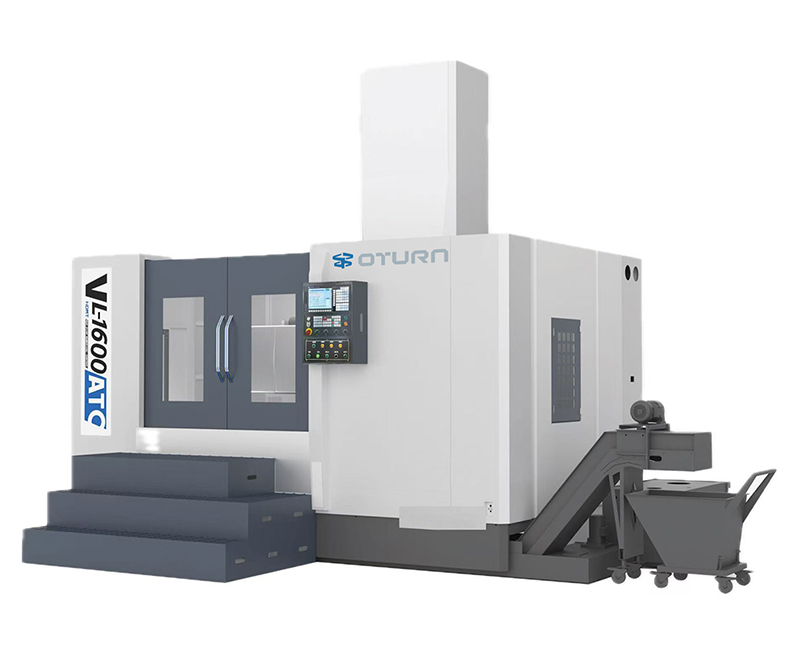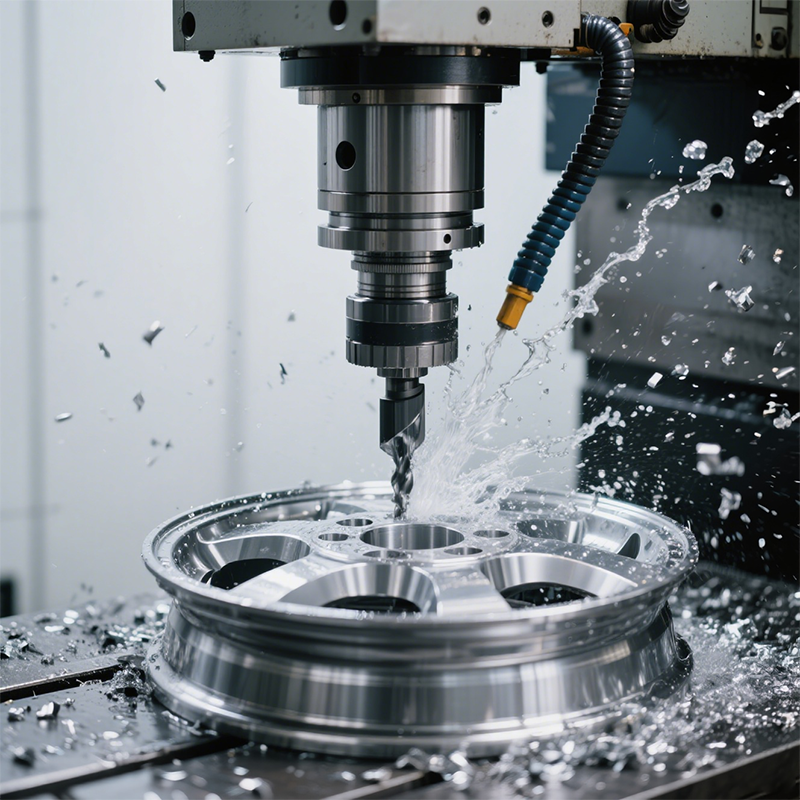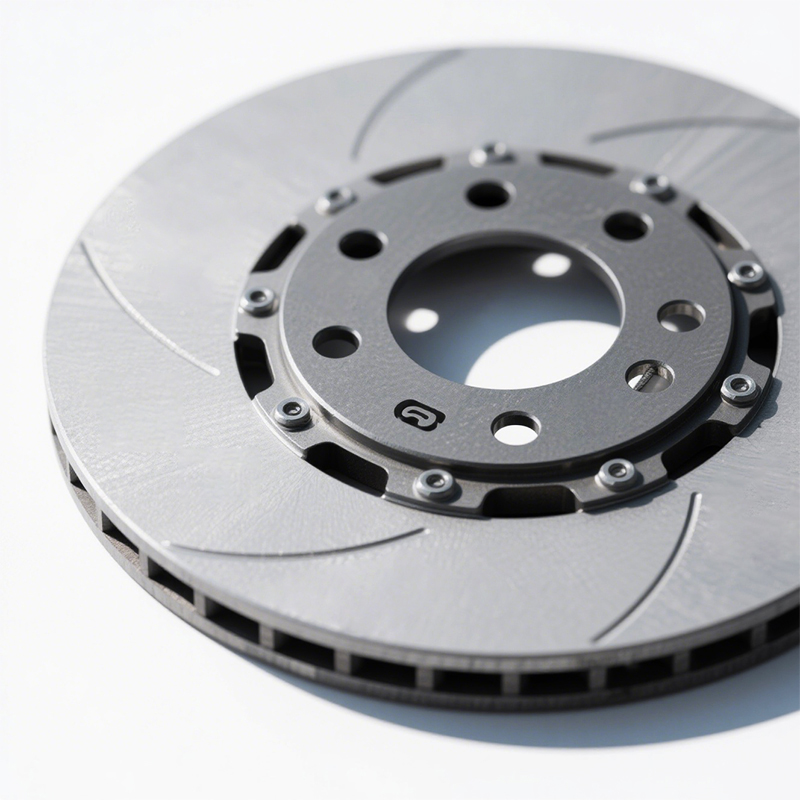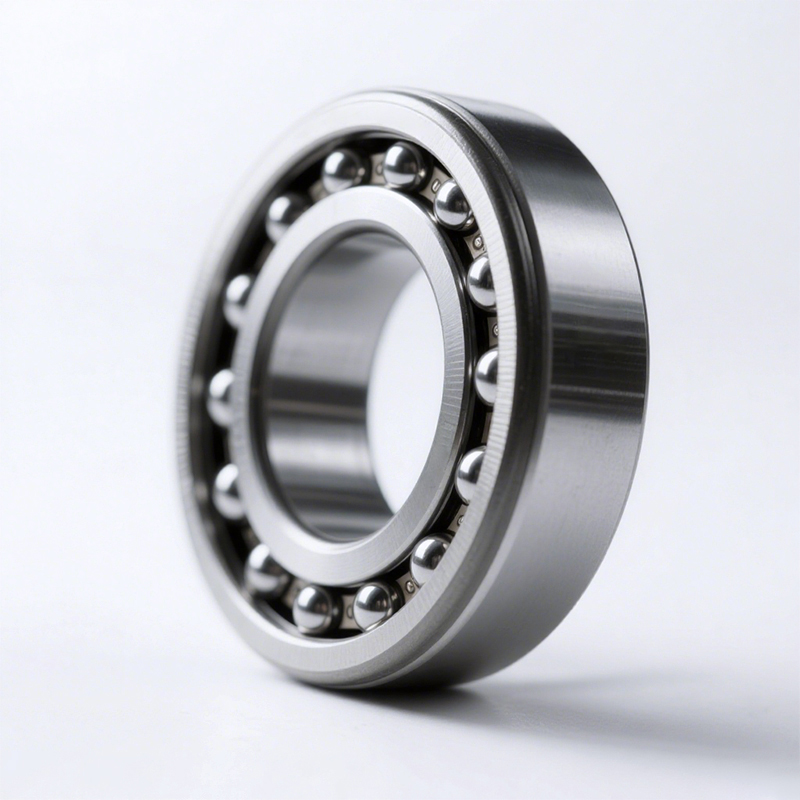As manufacturing advances toward intelligence and efficiency, traditional machining methods can no longer meet the growing complexity of part production demands. Improving machining accuracy, efficiency, and automation levels is critical for enterprises to enhance competitiveness, especially in key components such as automotive wheel hubs, brake discs, and bearings. This article delves into the advantages and solutions of CNC vertical lathes in these typical applications, helping manufacturing enterprises achieve high-quality and high-efficiency smart manufacturing transformation.
I. Automotive Wheel Hub Machining Application
Detailed Machining Process
1. Rough Machining Stage
Using vertical CNC lathes to perform initial machining of the wheel hub holes and inner rim, quickly removing excess material to ensure a solid foundation for subsequent processes.
2. Semi-Finishing Stage
Performing semi-finishing on the wheel hub holes and outer fillets to improve dimensional stability and prepare for finishing.
3. Finishing Stage
Using specialized internal grinding heads on vertical lathes to achieve high-precision finishing of the wheel hub holes, ensuring dimensional and surface quality meet design requirements.
4. Adaptive Control Stage
Introducing advanced adaptive control systems to monitor blank stock and tool wear in real-time, automatically adjusting machining parameters to ensure a high-quality fit between wheel hub holes and axle press fits.
Advantages and Features
· High Precision Assurance: Through CNC systems and adaptive control technology, tolerances are controlled within 0.02mm, achieving efficient interchangeability of wheel and axle assemblies.
· Improved Machining Efficiency: Upgraded vertical internal grinders combined with hydraulic feed devices significantly increase feed rates and shorten machining cycles.
· Strong Structural Stability: Vertical machine layout effectively reduces spindle and bearing loads, ensuring stable and consistent machining.
II. Brake Disc Machining Application
Typical Machining Steps
1. Clamping Stage
Using specialized fixtures to securely hold brake discs, ensuring stability and preventing surface damage during machining.
2. Rough Turning Stage
Using the large end face of the brake disc as a reference for axial positioning, clamping ventilation slots, rough turning the mounting flange, mounting holes, and brake surfaces.
3. Semi-Finishing Stage
Improving surface flatness and roughness of the brake disc to prepare for finishing.
4. Finishing Stage
Employing dual-tool turning technology to machine both brake surfaces simultaneously. Using the small end mounting flange face as a reference, fixtures support the inner hole, completing rough and finish turning of the large end inner hole and outer circle, ensuring parallelism and flatness meet design requirements.
5. Knurling Stage
Using dual-end grinding devices to knurl the brake disc surface, creating a cross-hatch pattern that significantly enhances braking performance.
Advantages and Features
· High Machining Accuracy: Dual-tool turning disperses cutting forces, reducing deformation and ensuring dimensional accuracy.
· High Production Efficiency: Integration of CNC vertical lathes and knurling devices enables multiple processes in a single setup, shortening production cycles.
· Flexible Adaptability: Supports dedicated machines or production lines, accommodating different production scales.
III. Bearing Machining Application
Machining Process Overview
1. Clamping Preparation
Securely mounting bearing workpieces on the worktable, selecting specialized tools to ensure machining accuracy.
2. Rough Machining Stage
Removing excess material from bearing inner and outer rings to form basic contours, laying the foundation for finishing.
3. Semi-Finishing Stage
Improving surface flatness and roughness of bearing inner and outer rings to ensure finishing quality.
4. Finishing Stage
Using high-precision tools and small turning depths for fine machining, ensuring bearing dimensions and surface quality meet design standards.
5. Inspection Stage
Regularly measuring and inspecting bearing dimensions, shapes, and surface roughness to ensure compliance with design requirements.
Advantages and Features
· Micron-Level Machining Precision: vertical CNC lathe achieve extremely high dimensional control, meeting stringent bearing industry standards.
· Automation Enhances Efficiency: CNC systems enable automated machining, reducing manual intervention and increasing productivity.
· Strong Stability: Vertical machine design reduces spindle and bearing loads, minimizing vibration and ensuring stable machining.
IV. Core Advantages of CNC Vertical Lathes
· Wide Machining Range: Suitable for discs, short shafts, sleeves, and various parts, widely used in automotive, aerospace, rail transit, and other industries.
· Balanced High Precision and Efficiency: Combining adaptive control and dual-tool turning technology to achieve micron-level precision and efficient production.
· Stability and Flexibility: Vertical layout effectively reduces spindle load; modular design meets diverse machining needs, enhancing production flexibility.
CNC vertical lathes demonstrate outstanding precision, efficiency, and stability in machining automotive wheel hubs, brake discs, and bearings, meeting the high standards of modern manufacturing for part quality and production capacity.
Conclusion
OTURN is committed to providing customers with high-performance CNC vertical lathes and intelligent automation solutions. Combining advanced technology and rich industry experience, we help manufacturing enterprises improve machining efficiency and product quality, achieving smart manufacturing transformation and upgrading. Contact us to learn more about our products and customized services, and together, let’s drive the manufacturing industry toward a smart future.
Post time: Jun-27-2025











